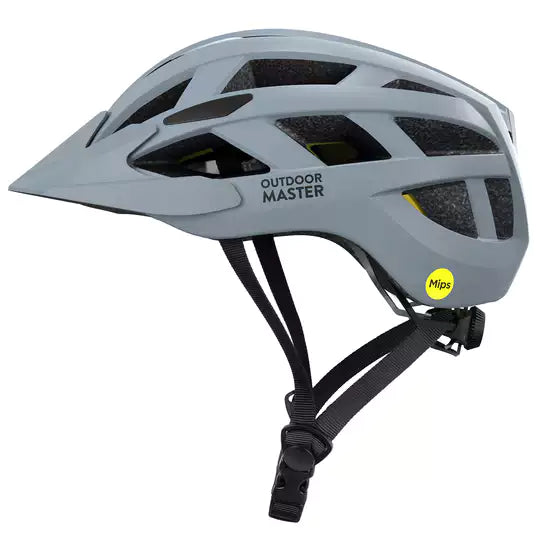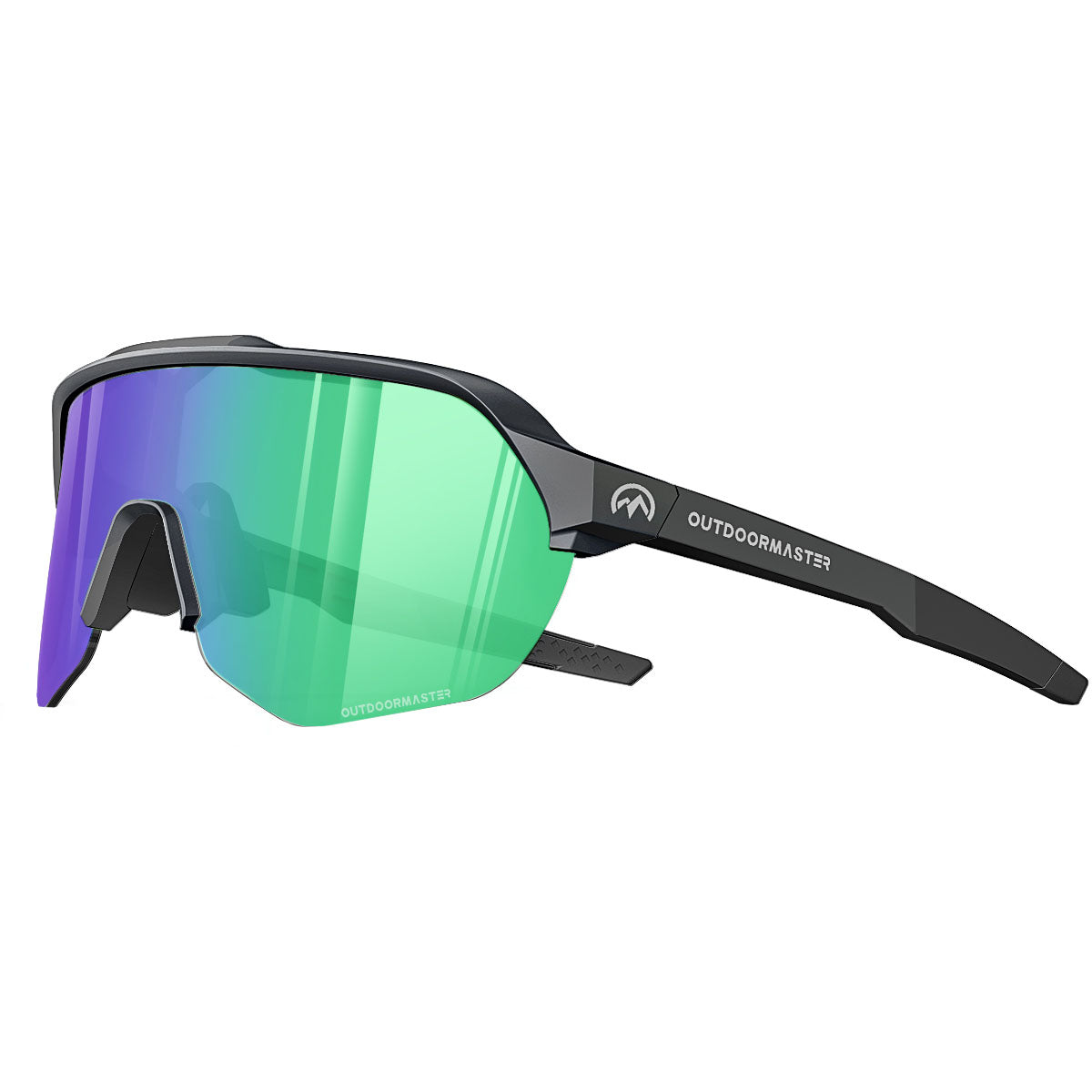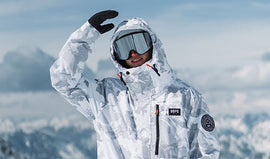Snow Helmets | Outdoor Master®
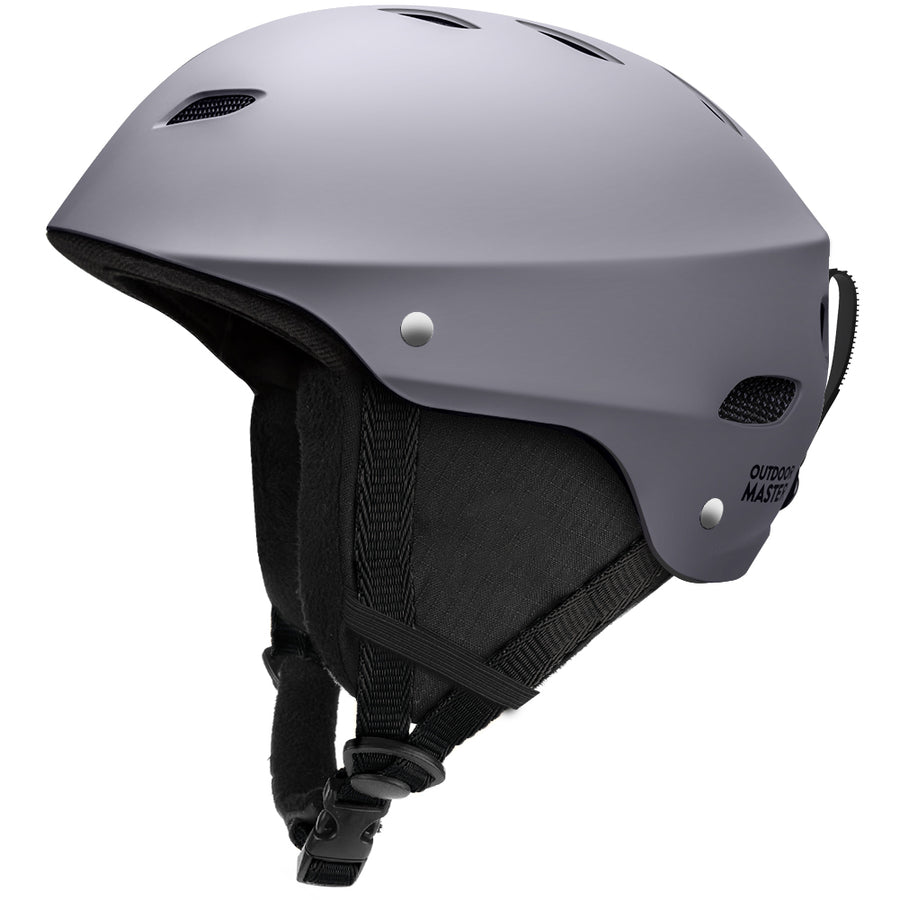 KELVIN KELVIN |
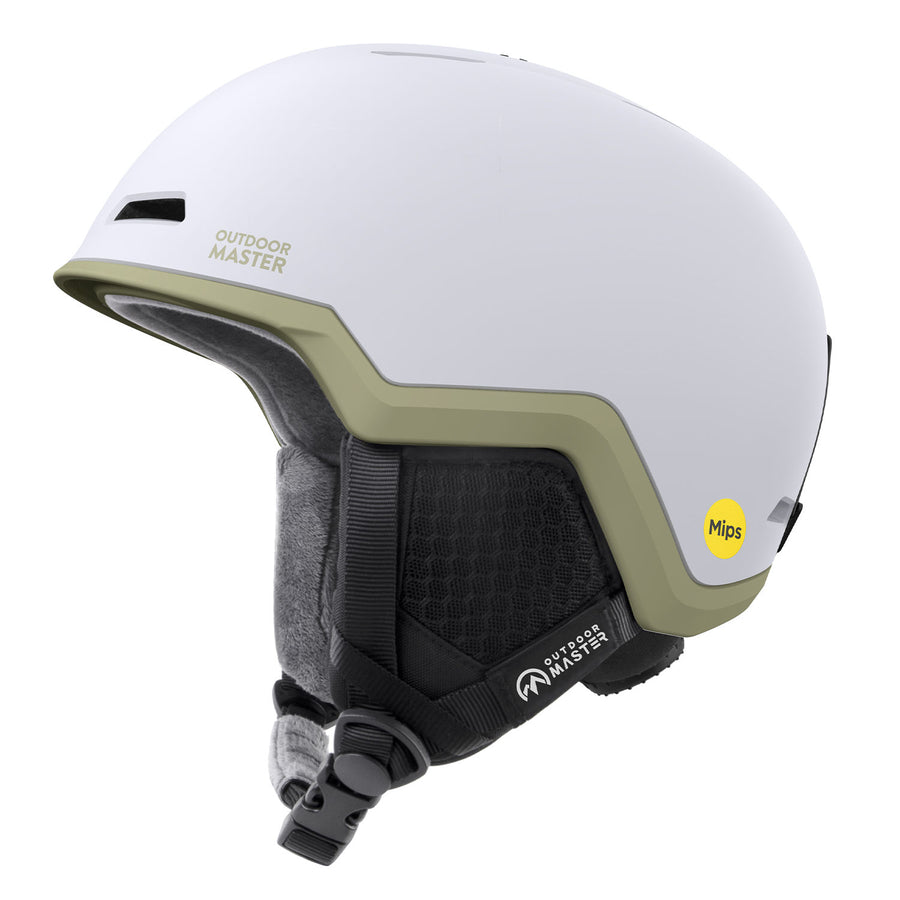 DIAMOND DIAMOND |
 LAZURITE LAZURITE |
|
|---|---|---|---|
| Safety | CE EN1077, ASTM | CE EN1077, ASTM, MIPS | CE EN1077, ASTM |
| Adjustability | ✓ | ✓ | ✓ |
| Vents | 14, Not Adjustable | 11, Adjustable | 10, Not Adjustable |
| Removable Liners | ✓ | ✓ | ✓ |
| Removable Ear Pads | ✓ | ✓ | ✓ |
| In-mold Construction | X | ✓ | X |
| Audio | Not compatible | Compatible with Outdoor Master BT01 | Compatible with Outdoor Master BT01 |
| In-mold Construction | X | ✓ | X |
There was a time when nobody wore a helmet for skiing and snowboarding, but now it's a rare sight to see someone without a snow helmet. Skiing or snowboarding without a helmet is not worth the risk; ski helmets offer more than just protection.
Snow helmets don't get soggy like a beanie hat in lousy weather. Modern snow helmets are also very comfortable and warm, making your time on the slope more enjoyable.
Here's everything you need to know about snow helmets so you know how to buy the best one for you.
Table of content
Anatomy Of Snow Helmets Types Of Snow Helmets Snow Helmet Safety Certifications Getting The Right Fit And Size Snow Helmet Features You Should Look Out For In Snow Helmets A Close Look At Outdoor Master Snow Helmets FAQsAnatomy Of Snow Helmets
Snow helmets are specially designed for skiing and snowboarding, as they have moisture-wicking liners, ear coverage, and ventilation. They are also made from materials suitable for the winter environment. Therefore, they are the best choice, rather than wearing a bike or skateboard helmet.
The Outer Shell
The outer shell is the hard plastic surface you can see outside the helmet. It's usually made from ABS high-impact plastic, and it's designed to protect your head from impacts, abrasions, and hard or sharp objects. The shell also helps to disperse the energy of an impact when you fall.
Inner Liner
The inner liner sits under the outer shell and is typically made from expanded polystyrene (EPS). This stuff absorbs the energy of impacts by compressing. You often won't see the damaged foam after a bad fall, but you should always replace your helmet if you've "used it."
Chin strap
the chin strap should be adapted to accommodate tightly under your chin and prevent the helmet from slipping. Ensure that it is simple to adjust even with gloves on.
Certification
Numerous unbiased organizations test the safety of snowboard helmets. A small sticker, typically from ASTM, CEN, or Snell RS, is placed on the rear of the helmet shell to identify models that have completed a stringent range of impact, roll, and strap tests.
Middle EPS Foam
The middle layer of EPS (Expanded Polystyrene) Foam in between the helmet shell and inner padding provides outstanding shock absorption when you fall on slopes and hit your head.
Comfortable Inner Padding
Made of fabrics and a sponge, it enhances comfort while skiing or snowboarding. Outdoor Master helmet sizes use removable, comfortable padding. Removable inner padding can be washed and re-install for hygiene.
Vents
better air circulation, heat regulation, and moisture control purposes, all Outdoor Master ski helmets have a perfect number of vents. Our in-mold helmet, Diamond, has adjustable vents that let the user decide the airflow.
Ear Pads
Outdoor Master snowboard helmets with removable ear pads will keep your ears warm and toasty on the slopes. You can also get a wireless Bluetooth speaker for a better experience while snowboarding or skiing.
Types Of Snow Helmets
There are two main kinds of snow helmets, in-mold and injection molded. In-mold helmets are made in a single molding process with the shell and foam attached.
Injection-molded helmets see the shell and foam as two separate pieces. These are more durable than in-mold snow helmets but are a little heavier and have a less refined design.
Snow Helmet Safety Certifications
To know if your snow helmet will give you enough protection, you need to look for a couple of safety certifications, ASTM2040 and CE EN1077.
ASTM F2040 is a U.S.-based snow helmet certification and is the most common you'll see. It covers recreational snowsports, excluding motorized sports. You'll see the ASTM sticker somewhere on the inside of the helmet.
CE EN1077 is a European certification for snow helmets. You may see snow helmets with both certificates. However, a CE EN helmet might not meet the ASTM requirements.
Just because a helmet is certified, it doesn't make your head invincible. Snow helmets are designed to limit the severity of your injuries at slower speeds.
Getting The Right Fit And Size Snow Helmet
Try on snow helmets to see if they fit you correctly, but this isn't possible when you buy online. If your helmet doesn't work when it arrives, don't put up with it. Please send it back and get one in a different size.
If you try on a helmet in a shop, it's best to take your goggles with you to be sure they are compatible. However, if you buy a helmet and goggles from the same brand, you can be confident they will work well together.
How To Measure Your Head For Snow Helmets
Run a tape measure around your head just above your eyebrows to measure your head. Ensure the tape measure is level all the way around, and don't make it too tight or loose.
You can now use the size chart on the snow helmet manufacturer's website to get the right size.
| SIZE | LENGTH (inches) | LENGTH (cm) |
| S | 19-20.5 | 48-52 |
|
M |
20.5-23 | 52-58 |
| L | 22-24 | 56-61 |
| XL | 23.6-24.8 | 60 - 63 |
*SIZE CHART above only works for Outdoor Master snow helmets
How Snow Helmets Should Fit
Snow helmets should feel snug but not too tight. Your helmet is too big if you can move it forwards and backward. When you put it on, shake your head from side to side. You need a smaller size if it moves, or you may be able to adjust the fit if it isn't too bad.
You must avoid the dreaded "gaper gap," so ensure that your helmet and goggles are close to your forehead without interfering.
All snow helmets have adjustable chin straps. Your chin strap needs to be tight enough to prevent the helmet from coming off in a fall. You should set its length so you can eat something without it pinching your jaw.
Some helmets allow you to fine-tune their fit by changing the padding inside. They also often have a dial on the back so you can tweak the helmet for a snug and secure fit.
Features You Should Look Out For In Snow Helmets
Snow helmets have various features that enhance your time on the slopes and improve comfort. Here are some examples:
Ventilation
Snow helmets have ventilation holes that let cool air in and exhaust warm air out the back and top. Some snow helmets have adjustable vents, so you can slide a lever to increase or reduce the airflow around your head.
Liners
Some snow helmets have detachable ear pads. These allow you to wear your helmet as you prefer. For example, you may want to wear a beanie underneath. Removing the liner and ear pads makes cleaning your helmet much more straightforward.
MIPS

Not all snow helmets have MIPS, but it's worth considering as MIPS improves protection. MIPS stands for Multi-Directional Impact Protection System. These snow helmets feature a slip plane that reduces the rotational forces often associated with impacts.
A Close Look At Outdoor Master Snow Helmets
Outdoor Master Kelvin Snow Helmet

KELVIN SKI HELMET
with ASTM Certified Safety
Shop NowThe Kelvin is a great-looking snow helmet that comes in many different colors to match your outfit. But it also has everything you need for a safe, comfortable day on the hill.
With its ASTM certification achieved with a reinforced ABS shell and shock-absorbing EPS core, you can have peace of mind when shredding the mountain.
The 14 individual ventilation holes ensure cool air enters the front of the helmet and warm air flows out the back. This means you can ride hard all day without overheating.
However, you can regulate your temperature with the removable ear pads and fleece liner. These make the helmet incredibly comfortable and easy to clean.
You can customize the fit of this helmet with the adjuster on the back. If you are between sizes, choose the larger size, as you can tighten the dial for the perfect fit.
Outdoor Master Diamond MIPS Ski Helmet

DIAMOND MIPS SKI HELMET
Shop Now
The Diamond MIPS ski helmet is a high-end helmet with many features and enhanced protection. MIPS provides a higher level of security which is complimented by the lightweight reinforced shell.
You can adjust the fit with the leather clasp on the chin strap and the dial on the back of the helmet. Also, you can remove the ear pads to customize how you wear them. But the ear pads are audio-ready, meaning you can fit headphones and speakers into them to listen to your favorite tunes on the slopes.
Outdoor Master Lazurite Snow Helmet

LAZURITE SNOW HELMET
Shop Now
The Lazurite is a snow helmet with an emphasis on comfort and safety. It is lightweight with a reinforced ABS shell and shock-absorbing EPS core for high-end protection.
This helmet is lined with super comfortable fleece material. You can remove the lining for warmer days and cleaning. The ear pads are audio-ready, too, so you can shred your favorite jams.
The helmet's superb ventilation enhances comfort from 10 strategically placed vents. The Lazurite is compatible with all goggles, as it perfectly matches the shape of the goggle frame.
FAQ
What does MIPS on a helmet mean?
MIPS stands for Multi-Directional Impact Protection System. These helmets have a slip plane that moves when you hit your head at an angle. The technology reduces the rotational force, protecting your head and neck.
Can I use a bike helmet for skiing?
A bike helmet is not designed for skiing. It doesn't have the required coverage, insulation, or features suitable for skiing; therefore, you need a proper snow helmet for skiing or snowboarding.
When should I replace my ski helmet?
It would be best if you replaced your ski helmet every five years or after it has received a severe impact.
How Much Should I Spend on a Ski Helmet?
Ski helmets manufactured by big-name brands such as Smith, Giro, and Salomon will cost around $100-$300, sometimes even more. Outdoor Master offers solid tech snowboard helmets in a much more reasonable price range of $50-$150.
- Featured
- Best selling
- Alphabetically, A-Z
- Alphabetically, Z-A
- Price, low to high
- Price, high to low
- Date, old to new
- Date, new to old


